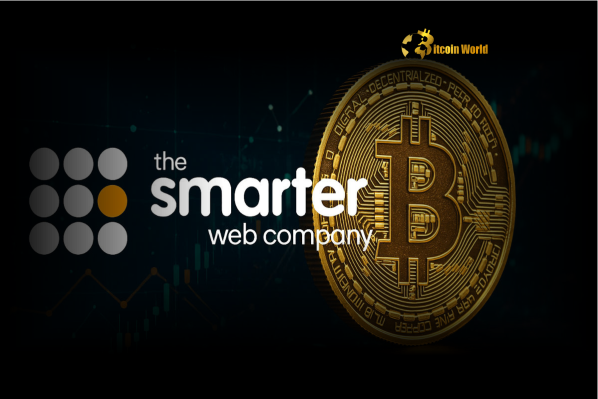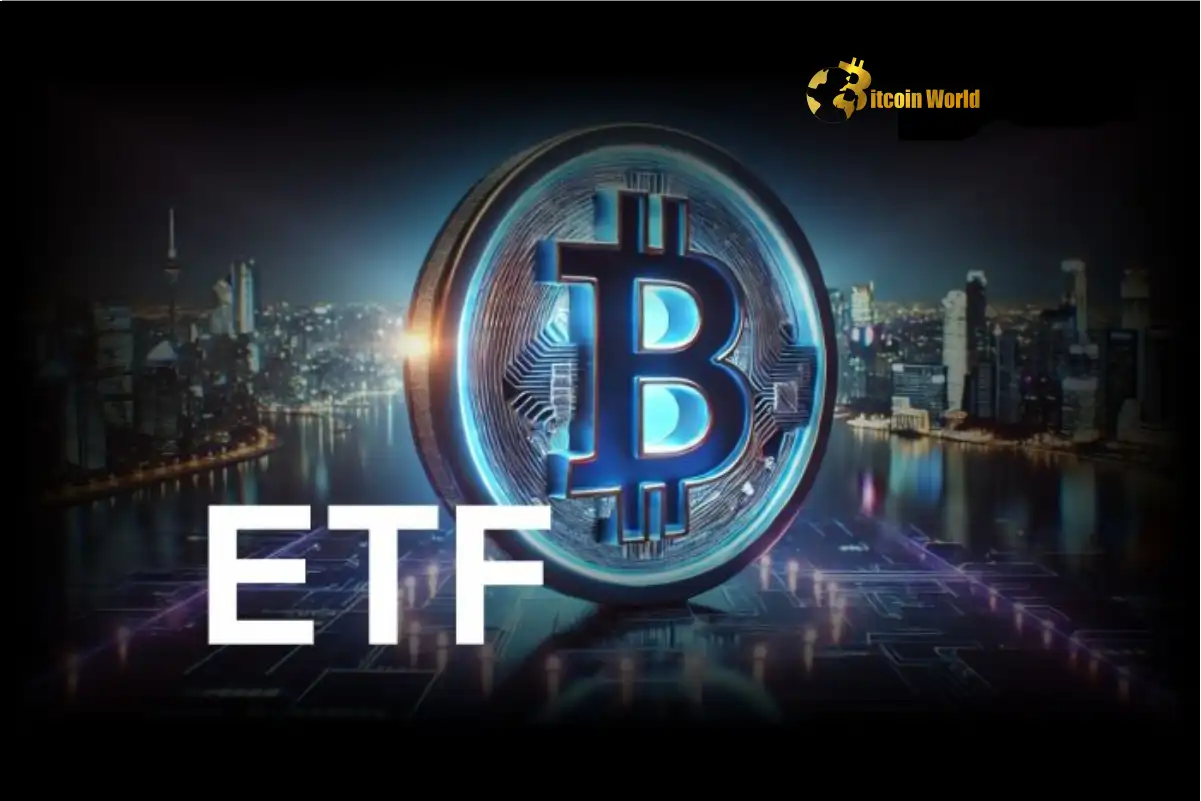BitcoinWorld
![]()
US Semiconductor Market: Unveiling the Crucial 2025 Transformations in AI Chips and Export Controls
The digital frontier, from groundbreaking AI models to the intricate networks powering cryptocurrencies, hinges on one foundational element: semiconductors. In 2025, the US semiconductor market experienced a whirlwind of innovation, geopolitical maneuvering, and strategic shifts, shaping not just the future of computing but the very landscape of global technological dominance. This year proved to be a pivotal chapter in the ongoing ‘AI race,’ with every move by industry giants and government bodies sending ripples across the globe.
How is Intel Reshaping its Future in the US Semiconductor Market?
For a legacy giant like Intel, 2025 was a year of profound introspection and aggressive restructuring. Under the new leadership of CEO Lip-Bu Tan, who took the helm in March, the company immediately signaled a decisive shift towards becoming an ‘engineering-focused company’ once again. Tan, a seasoned industry veteran and former board member, wasted no time implementing his vision, initiating a series of bold, albeit challenging, strategic moves designed to revitalize the company’s core:
- New Leadership Appointments: In June, Intel announced several high-profile engineering hires and a new chief revenue officer, reinforcing its commitment to technical excellence and market penetration.
- Significant Layoffs: Rumors from April materialized into reality in June, as Intel began laying off a substantial portion of its Intel Foundry staff, with plans to eliminate 15% to 20% of workers in that business unit by July. These layoffs were part of Tan’s strategy to ‘flatten the organization’ and reduce operational redundancies.
- Manufacturing Consolidation: A major announcement in July confirmed Intel was pulling back on some of its previously ambitious manufacturing operations. Projects in Germany and Poland were halted, and test operations were consolidated, indicating a strategic pivot towards efficiency and optimized resource allocation rather than broad expansion. The company also set a target to end the year with around 75,000 employees, reflecting a leaner operational model.
- Potential Asset Offloading: In May, reports surfaced that Intel was exploring spinning off non-core business units, specifically its networking and edge units, which contributed significantly to its 2024 revenue. This move aligns with Tan’s focus on streamlining operations and concentrating on core semiconductor innovation.
- Ohio Plant Delay: A setback occurred in February, with the delay of Intel’s $28 billion chip fabrication plant in Ohio for the second time. Construction is now not expected to wrap up until 2030, with operations potentially starting in 2031, highlighting the immense capital and time commitment involved in advanced manufacturing.
These actions demonstrate Intel‘s fierce determination to regain its competitive edge in the highly dynamic US semiconductor market, especially as the demand for high-performance chips for AI applications continues to soar.
What Challenges Do AI Chip Export Restrictions Pose?
The year 2025 was dominated by an evolving and often contentious debate around AI chip export restrictions, reflecting deep national security concerns and the fierce competition for technological supremacy between the U.S. and China. The regulatory landscape shifted dramatically, creating uncertainty and significant financial implications for leading semiconductor firms:
- Biden’s Sweeping Proposal (January): Just days before leaving office, former President Joe Biden proposed a comprehensive three-tier structure for U.S.-made AI chip exports. This framework aimed to control chip purchases by countries based on their perceived risk, with Tier 1 facing no restrictions, Tier 2 facing new limits, and Tier 3 facing additional stringent controls.
- A Last-Minute Reversal (May): Despite Biden’s proposal, the Trump administration, upon taking office, chose a different path. The ‘Framework for Artificial Intelligence Diffusion’ was formally rescinded by the U.S. Department of Commerce in May, with promises of new guidance to come. However, the DOC reiterated that using Huawei’s Ascend AI chips anywhere in the world remained a violation of U.S. export rules, signaling continued vigilance.
- Trump’s AI Action Plan (July): The Trump administration unveiled its own AI Action Plan, emphasizing the need for U.S. chip export controls and coordination with allies. While the plan lacked concrete details on restrictions, it reinforced the strategic importance of controlling advanced semiconductor technology.
- Increased Licensing Requirements (April): Nvidia‘s H20 AI chips, designed for the Chinese market, were hit with new export licensing requirements. This move, which also impacted TSMC and Intel, resulted in significant charges for companies, with Nvidia alone expecting a $5.5 billion hit in Q1 of its 2026 fiscal year due to these restrictions.
- Anthropic’s Stance: AI startup Anthropic consistently advocated for stricter chip export controls, even suggesting tweaks to the diffusion framework to impose further restrictions on Tier 2 countries. This stance was met with strong opposition from chip manufacturers like Nvidia, who argued that American firms should focus on innovation rather than overly restrictive policies.
These shifting policies underscore the complex balancing act between fostering innovation, protecting national security, and maintaining global trade relationships. The uncertainty surrounding export restrictions continues to be a major factor influencing investment and development in the US semiconductor market.
Who’s Winning the AI Chips Race: Nvidia vs. AMD?
The competition for dominance in the AI chips market intensified significantly in 2025, primarily featuring a fierce rivalry between Nvidia and AMD. Both companies made strategic moves to capture market share and navigate the challenging regulatory environment:
- Nvidia’s China Conundrum: Facing the brunt of export restrictions, Nvidia reported a staggering $4.5 billion in charges in Q1 due to U.S. licensing requirements on its H20 AI chips, with an expected $8 billion hit in Q2 revenue. CEO Jensen Huang announced in June that the company would no longer include the Chinese market in future revenue forecasts, indicating a strategic shift away from reliance on this restricted market. Despite this, Nvidia did file an application in July to restart sales of H20 AI chips in China and even announced a new chip, the RTX Pro, specifically designed for the Chinese market, showcasing its persistent efforts to maintain a foothold.
- AMD’s Aggressive Expansion: AMD, a formidable competitor, embarked on an aggressive acquisition spree to bolster its AI capabilities and challenge Nvidia’s lead. In May, it acquired Enosemi, a silicon photonics startup whose light-based data transmission technology is gaining increasing interest in the semiconductor industry. This was followed by the acqui-hire of Untether AI’s team in June, a company known for developing AI inference chips, further strengthening AMD’s talent pool. Just days later, AMD acquired Brium, an AI software optimization startup that helps adapt AI software to various hardware, a crucial move given much AI software is designed with Nvidia hardware in mind. These acquisitions clearly signal AMD’s intent to capture a larger share of the burgeoning AI chips market.
The battle between these two giants highlights the critical importance of specialized AI chips in driving the next wave of technological innovation and the lengths companies will go to secure their position in this high-stakes arena.
How Do Geopolitics Influence the US Semiconductor Market?
Beyond corporate strategies and domestic policies, global geopolitics played an undeniable role in shaping the US semiconductor market in 2025. The interplay between international relations, trade, and national security had direct consequences on supply chains and market access:
- The UAE AI Deal on Hold (July): A groundbreaking deal brokered by the Trump administration in May, which would have seen the United Arab Emirates purchase billions of dollars worth of AI chips from Nvidia, was reportedly put on hold. This suspension stemmed from U.S. national security concerns and fears that these advanced chips could be illicitly diverted from the Middle East to China, underscoring the U.S.’s determination to control the end-use of its advanced technology.
- Malaysia’s Export Controls (July): In a move reflecting the global ripple effect of U.S. export restrictions, Malaysia announced it would launch trade permits for U.S.-made AI chips. This new restriction requires a 30-day notice to the Malaysian government before exporting any U.S. AI chips, indicating a growing trend of countries implementing their own controls to manage sensitive technology.
- U.S.-China Tensions Flare (May/July): Tensions between China and the U.S. escalated when China’s Commerce Secretary strongly reacted to U.S. guidance warning companies against using Huawei’s AI chips. This friction continued with U.S. Commerce Security Howard Lutnick linking the resumption of certain AI chip sales to China by U.S. companies (like Nvidia and AMD) to ongoing trade discussions regarding rare earth elements, illustrating the intricate web of dependencies and leverage points in global trade.
- DeepSeek’s ‘Reasoning’ Model (January): While not directly semiconductor news, the release of Chinese AI startup DeepSeek’s open R1 ‘reasoning’ model caused significant alarm in Silicon Valley. This development intensified concerns about China’s independent AI capabilities and further fueled calls for stringent chip export restrictions to maintain the U.S.’s technological lead.
These events highlight how the US semiconductor market is not just an economic sector but a critical instrument of foreign policy and national security, constantly influenced by international dynamics.
Beyond the Silicon: The Broader Tech Ecosystem and Bitcoin World Disrupt 2025
Amidst the high-stakes corporate maneuvers and geopolitical tensions, the broader tech ecosystem continued to innovate and convene. The Bitcoin World Disrupt 2025 event, celebrating its 20th anniversary in San Francisco, served as a crucial gathering point for tech and VC heavyweights. Figures from Netflix, ElevenLabs, Wayve, and Sequoia Capital joined the agenda, offering insights that fuel startup growth and sharpen industry edge.
Such events underscore the interconnectedness of the tech world. While the direct focus of Disrupt 2025 might not have been solely on the US semiconductor market, the discussions on AI advancements, venture capital trends, and startup growth inherently rely on the foundational progress within the semiconductor industry. The availability of powerful AI chips, the impact of export restrictions, and the strategic direction of companies like Intel and Nvidia directly influence the viability and innovation potential of countless startups and established tech firms showcased at such conferences. The insights shared at Disrupt 2025 provided a vital pulse check on the industry’s health and future trajectory.
A Pivotal Year for Semiconductors
As 2025 concluded, it was clear that the US semiconductor market had undergone a period of intense transformation. From Intel‘s bold internal restructuring to Nvidia‘s strategic navigation of complex export restrictions, and the broader geopolitical chess match over AI chips, the year laid a critical foundation for the future. The industry’s trajectory remains intertwined with global power dynamics, technological innovation, and the relentless pursuit of AI supremacy. The lessons learned and the strategies implemented in 2025 will undoubtedly shape the competitive landscape and technological advancements for years to come.
To learn more about the latest AI market trends, explore our article on key developments shaping AI features and institutional adoption.
This post US Semiconductor Market: Unveiling the Crucial 2025 Transformations in AI Chips and Export Controls first appeared on BitcoinWorld and is written by Editorial Team




